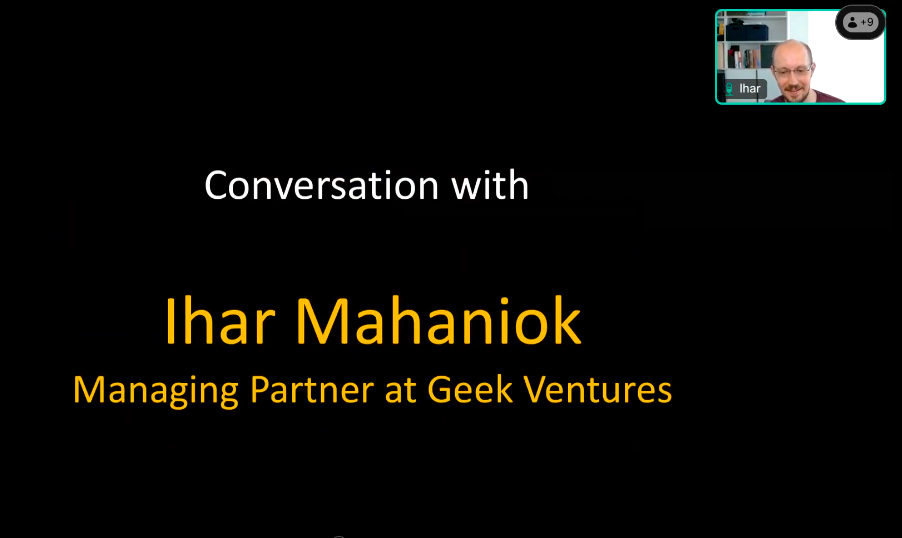Bootstrapping an EdTech Venture to $6M, Ready to Scale with AI: Daniel Santos, CEO of Prepory (Part 1)

This story is a great example of an EdTech company that has built a validated, bootstrapped, profitable business that can potentially be scaled using AI.
>>>Featured Videos
Colors: Temples in the Storm II

I’m publishing this series on LinkedIn called Colors to explore a topic that I care deeply about: the Renaissance Mind. I am just as passionate about entrepreneurship, technology, and business, as I am about art and culture. In this series, I will typically publish a piece of art – one of my paintings – and I request you to spend a minute or two deeply meditating on it. I urge you to watch your feelings, thoughts, reactions to the piece, and write what comes to you, what thoughts it triggers, in the dialog area. Let us see what stimulation this interaction yields. For today – Temples in the Storm II
Temples in the Storm II | Sramana Mitra, 2018 | Watercolor, Ink, Pastel | 18 x 24, On Paper
September 11 – 702nd 1Mby1M Mentoring Roundtable for Entrepreneurs

Entrepreneurs are invited to the 702nd FREE online 1Mby1M Mentoring Roundtable on Thursday, September 11, 2025, at 8 a.m. PDT / 11 a.m. EDT / 5 p.m. CEST / 8:30 p.m. India IST.
If you are a serious entrepreneur, register to Pitch and sell your business idea. You’ll receive straightforward feedback, advice on next steps, and answers to any of your questions. Others can register to Attend to watch, learn, and interact through the online chat.
You can learn more here and and REGISTER TO PITCH OR ATTEND HERE. Register and you will receive the recording by email, even if you are unable to attend. Please share with any entrepreneurs in your circle who may be Interested.
Video FAQs
Can 1M/1M Help Me Raise Money?
How Does 1M/1M Democratize Entrepreneurship Education?
How Does 1M/1M Democratize Management Consulting?
When Is The Right Time To Join 1M/1M?
Can 1M/1M Help Me With Business Development?
Can 1M/1M Help Me With Market Sizing?
Can 1M/1M Help Me Validate My Product?
Will I Have Private 1-on-1 Sessions In 1M/1M?
How Does 1M/1M Help Entrepreneurs Connect With Silicon Valley?
Mentoring or Consulting?
Why Does 1M/1M Charge $1000 a Year?
Why Does 1M/1M Partner With Local Organizations?
Why Don\’t Mentoring Networks Work?
Why Is It Important To Study With 1M/1M Now?
Dan Stewart Story
Vikrant Mathur Story Download" class="hvideo iframe playbut videow" href="http://www.youtube.com/embed/a> ?rel=0&autoplay=1"> Download Android " class="hvideo iframe playbut videow" href="http://www.youtube.com/embed/a> ?rel=0&autoplay=1"> Android
701st 1Mby1M Entrepreneurship Podcast with Ihar Mahaniok, Geek Ventures
Ihar Mahaniok is Managing Partner at Geek Ventures. We have an excellent discussion on AI trends and startup opportunities.
Podcast: Play in new window | Download
Subscribe: Apple Podcasts | Android | Google Play | Stitcher | TuneIn | RSS
701st 1Mby1M Roundtable Recording
In case you missed it, you can listen to the recording of this roundtable here:
Roundtable Recap: September 4 – AI Investment Thesis with Ihar Mahaniok, Geek Ventures

During this week’s roundtable, we had as our guest Ihar Mahaniok, Managing Partner at Geek Ventures. We had an excellent discussion on AI trends and startup opportunities.
AvQuint Innovations
As for pitches, first up we had Shantanu Sonawane from Pune, India, pitch AvQuint Innovations, a hardware product for automatically covering cars.
Jaovi-Go
Then we had Bruno Ferrini from Lima, Peru, try to pitch Jaovi-Go in Spanish. Unfortunately, we don’t do the roundtable discussions in Spanish or any other language except English.
Good news, however: If English is not your primary language, my feedback is available in 40 languages using our Digital Mind AI Mentor. You can “talk” to and ask questions about your strategy, your options, your idea, and anything else that is top of mind and needs discussion. The AI Mentor is private, 1-on-1, available 24/7. You can work with it on your schedule in English, Spanish, French, Hindi, and a host of other regional languages.
Hidden Gems
Next we had Karthik Venkatachalam from Mountain House, California, pitch Hidden Gems, a proposed AI Companion product for Indian languages.
You can listen to the recording of this roundtable here:
Cloud Stocks: Broadcom Chipping Away at NVIDIA’s Market

Yesterday, Broadcom (NASDAQ: AVGO) reported its quarterly results that continued to outpace market expectations. The company is riding high on the demand for AI chips. Its stock has climbed more than 30% since the start of the year.
>>>1Mby1M Virtual Accelerator AI Investor Forum: Vinit Bhansali, Takshil Venture Partners (Part 5)
Sramana Mitra: Interesting. I’m sure you hear this in AI conversations in particular. This conversation today hasn’t been as AI-heavy as usual, but in those discussions, domain knowledge comes up a lot.
People who can extract real value from enterprise AI and workflow are those with deep domain knowledge. They understand what’s happening and where they can add value by working through those processes.
>>>